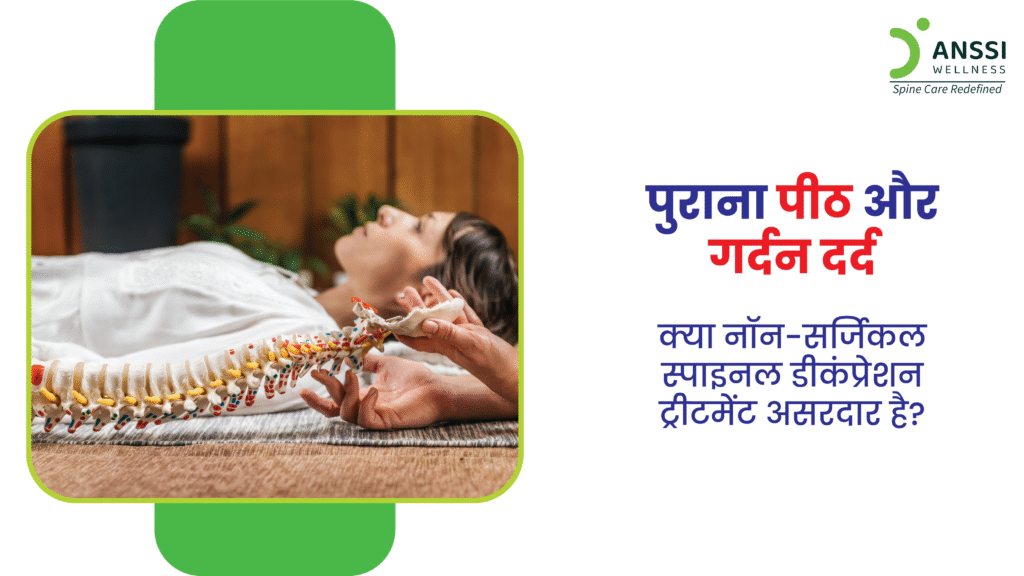
पुराना पीठ और गर्दन दर्द: क्या नॉन-सर्जिकल स्पाइनल डीकंप्रेशन ट्रीटमेंट असरदार है?
आजकल दीर्घकालिक गर्दन दर्द, पीठ दर्द, और स्पाइनल डिस्क से जुड़ी समस्याएं जैसे स्लिप डिस्क, डिस्क बल्ज, या साइटिका, आम होती जा रही हैं। इनमें से कई समस्याओं का इलाज

आजकल दीर्घकालिक गर्दन दर्द, पीठ दर्द, और स्पाइनल डिस्क से जुड़ी समस्याएं जैसे स्लिप डिस्क, डिस्क बल्ज, या साइटिका, आम होती जा रही हैं। इनमें से कई समस्याओं का इलाज
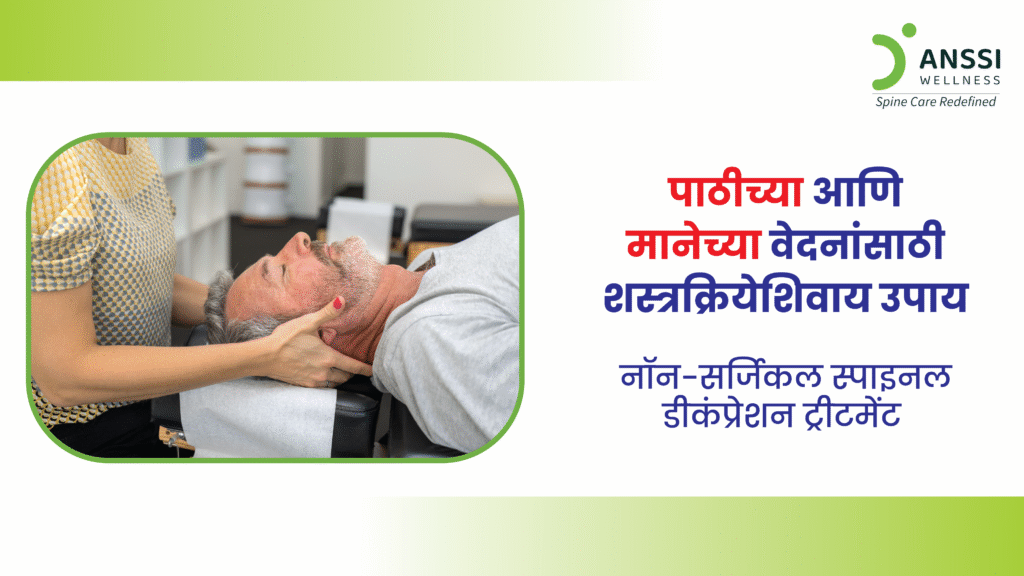
आजच्या धावपळीच्या आणि बसून काम करण्याच्या जीवनशैलीबरोबर दीर्घकालीन पाठदुखी आणि मानदुखी ह्या त्रासदायक समस्या आता सर्वसामान्य झाल्या आहेत. यावर उपाय म्हणून अनेक लोक तात्पुरत्या उपचारांवर अवलंबून राहतात, जसे की औषधे,
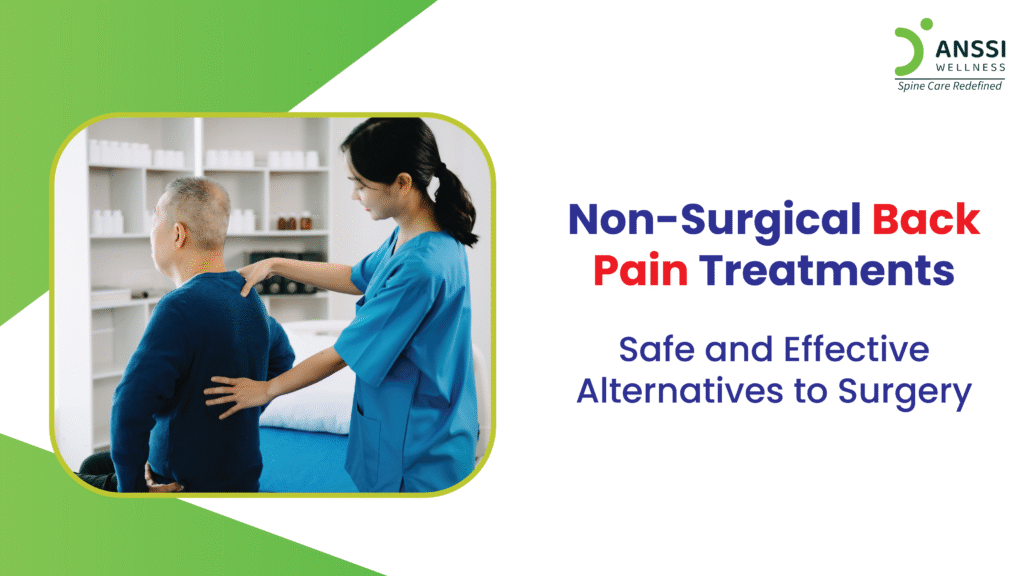
Back pain is one of the most common health problems worldwide, affecting millions of people of all ages. Whether it’s caused by poor posture, disc degeneration, injury, or lifestyle habits,
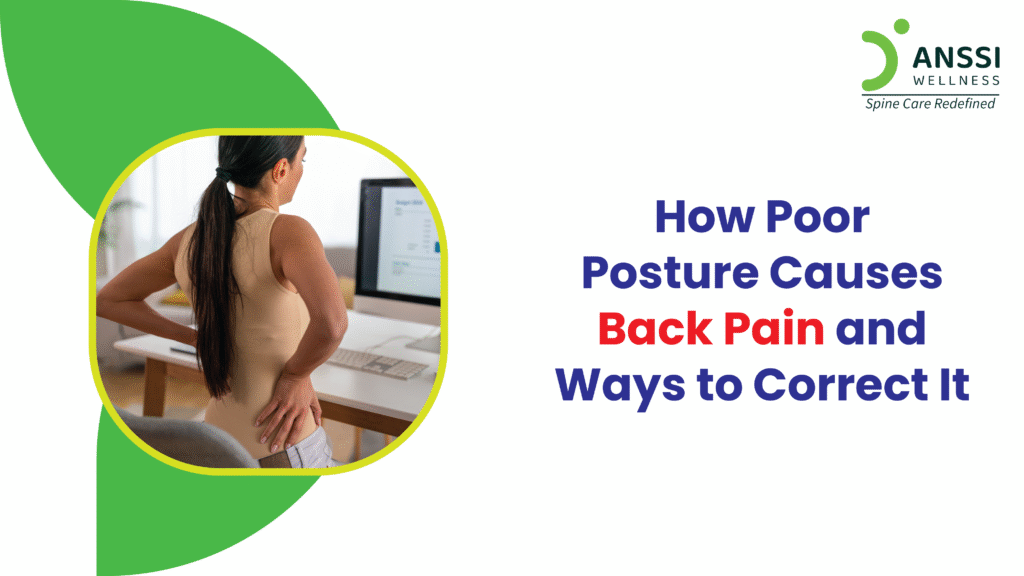
In today’s fast-paced digital world, poor posture has become a silent but significant contributor to back pain. Whether it’s slouching at your desk, hunching over a smartphone, or standing with

Sleep is essential for healing, restoration, and overall well-being. However, many people overlook how sleep quality and posture impact musculoskeletal health. Poor sleeping habits can contribute to chronic back and

आजच्या धावपळीच्या जीवनशैलीत पाठीच्या खालच्या भागातील वेदना (लोअर बॅक पेन) हा अनेकांसाठी नेहमीचा त्रास बनला आहे. दीर्घकाळ एका जागी बसणे, चुकीचा पोश्चर, वजनाचे प्रमाण, आणि मानसिक ताण यामुळे या वेदना

Lower back pain is one of the most common health complaints today, affecting people of all ages and lifestyles. While it’s often associated with physical causes like poor posture, injuries,

In today’s digital age, most of us spend a significant part of our day seated at desks, often staring at screens for hours on end. While this may seem harmless,

Chronic back pain has become a growing health concern in today’s fast-paced world. Many individuals suffer silently, fearing surgery, injections, or long-term medications. But thanks to advances in non-surgical treatments,
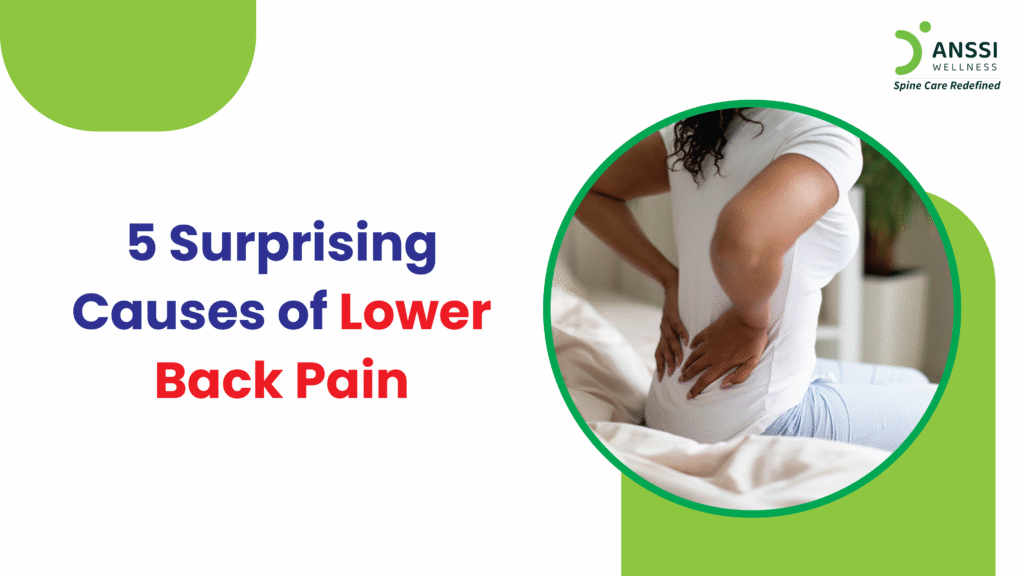
When we think about lower back pain, we often blame injuries, bad posture, or lifting heavy objects. However, there are many surprising factors that could be silently contributing to that

Farming is the backbone of our society, providing essential food and resources. Yet, behind this noble profession lies a harsh reality: chronic back pain is extremely common among farmers. Daily
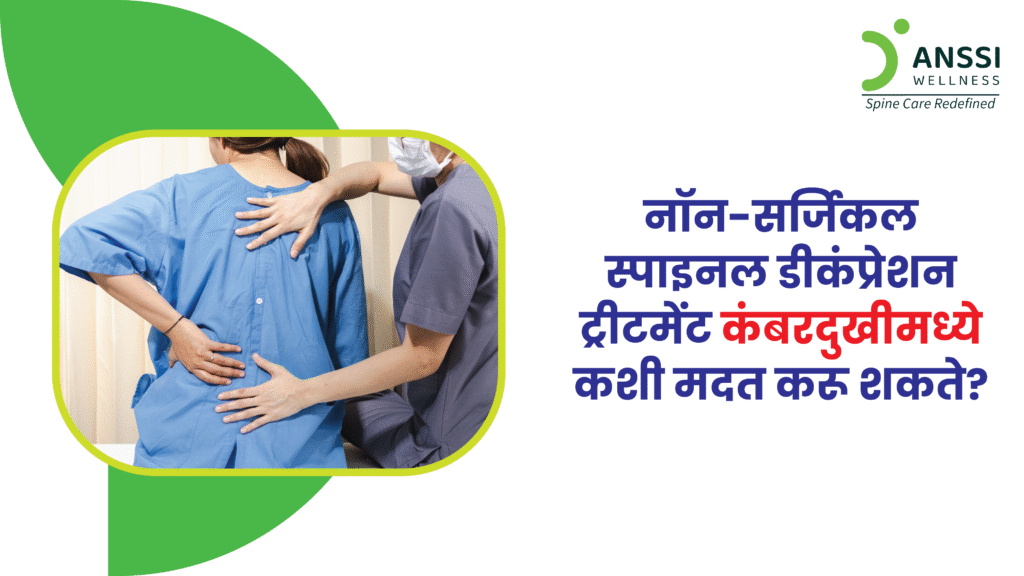
कंबरदुखी, ज्याला आपण लोअर बॅक पेनही म्हणतो, हा आजच्या युगातील एक अत्यंत सर्वसामान्य पण त्रासदायक आजार आहे. तरुण वयातही बऱ्याच जणांना हे दुखणे सतावत असते. कामाच्या सवयी, ताणतणाव, किंवा बसण्याची
Have Doubts?
Contact Us
Copyright © 2025 ANSSI WELLNESS CENTER LLP.
We are Asia’s Fastest Growing Chain of Spine Clinics. Consult With our Spine Experts and Unlock your Pain Free Life
Book Appointment with our Spine Expert
Get Detailed Diagnosis and a Customized Treatment Plan
Complete the Treatment and Unlock the Door to Pain Free Life